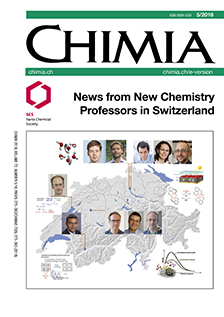New Earth-abundant Materials for Large-scale Solar Fuels Generation
DOI:
https://doi.org/10.2533/chimia.2018.333Keywords:
Copper oxide, Hydrogen, Photoelectrochemical water splitting, Sb2se3, Solar fuelsAbstract
The solar resource is immense, but the power density of light striking the Earth's surface is relatively dilute, necessitating large area solar conversion devices in order to harvest substantial amounts of power for renewable energy applications. In addition, energy storage is a key challenge for intermittent renewable resources such as solar and wind, which adds significant cost to these energies. As the majority of humanity's present-day energy consumption is based on fuels, an ideal solution is to generate renewable fuels from abundant resources such as sunlight and water. In this account, we detail our recent work towards generating highly efficient and stable Earth-abundant semiconducting materials for solar water splitting to generate renewable hydrogen fuel.Downloads
Published
2018-05-30
Issue
Section
Scientific Articles
License
Copyright (c) 2018 Swiss Chemical Society

This work is licensed under a Creative Commons Attribution-NonCommercial 4.0 International License.
How to Cite
[1]
Chimia 2018, 72, 333, DOI: 10.2533/chimia.2018.333.







